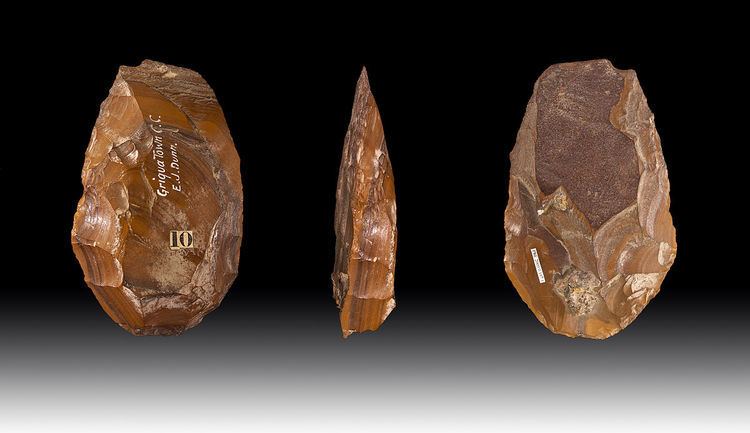 | ||
The concept of the Northern Cape as a distinct geo-political region of South Africa coalesced in the 1940s when a "Northern Cape and Adjoining Areas Regional Development Association" was formed and the first map featuring the name "Northern Cape" was published. The geographic spread to which the term applied was not fixed until 1994, however, when it attained precise definition as the Northern Cape Province, one of South Africa's nine post-apartheid provinces. Since then there have been boundary adjustments to include parts of the former Bophuthatswana (transferred from North West Province) adjacent to Kuruman and Hartswater. Vryburg and Mafikeng, in the north eastern extremity of the former Cape Province - and hence regarded as part of the pre-1994 "Northern Cape" - are excluded, being part, now, of the North West Province.
Contents
- Precolonial history
- Forgotten frontier
- Copper Boom
- Diamond Fields
- Conquest and Resistance
- Anglo Boer War
- Struggle History
- Post 1994
- References
A History of the Northern Cape, properly speaking, would cover this recent period only. The different regional histories of the area now known as the Northern Cape nevertheless have certain common themes. It is, in the title of an important study by historian Nigel Penn, The Forgotten Frontier in South African history. Part of the history in question is also a pivotal one that heralded the modern era in the subcontinent, revolving on mineral wealth (pre-eminently on the Diamond Fields), industrialisation, migrant labour and the compound/hostel system, urbanisation and systematic segregation. This combination of processes and phenomena has been referred to by historians as the mineral revolution in South Africa.
Precolonial history
It has been said: "The South African central plateau is unique in the world...in that it supported large numbers of non-farming people who were also prolific makers of stone tools until very recent times. A brief comparison of surveys conducted elsewhere in the world reveals promptly and unambiguously that South Africa is richer in Stone Age remains than any other place on earth."
There was little general appreciation of this as a result of apartheid education: “To look at the history of South Africa [as it is has been taught in our schools]," remarked Prof N.J. van der Merwe, Professor of Archaeology at the University of Cape Town, "is to look at human events through the wrong end of a telescope.”
Major sites that have relevance include Wonderwerk Cave near Kuruman, Canteen Kopje near Barkly West, a cluster of archaeological sites at Kathu, the Wildebeest Kuil Rock Art Centre on the road from Kimberley to Barkly West, sites in the ǀXam and ǂKhomani heartland, particularly rock art sites in the Karoo, and the stone walled ruins at Dithakong north east of Kuruman.
Forgotten frontier
See:
The role of Louis Anthing in exposing acts of genocide against the ǀXam people in the Bushmanland/Upper Karoo area after the colonial boundary was extended to the Orange River in 1847 is reflected in his remarkable letter to parliamonet in 1863. Current research by Jose Manuel de Prada-Samper, Pippa Skotnes and colleagues begins to highlight this episode in South African history.
Copper Boom
See:
Diamond Fields
See:
Conquest and Resistance
See:
Anglo-Boer War
See:
Struggle History
See:
Post-1994
The Northern Cape as it is now known came into being in 1994. Boundary adjustments resulted in the addition of certain parts of North West Province.
Premiers of the Northern Cape have been: Manne Dipico, Dipuo Peters and Hazel Jenkins.
